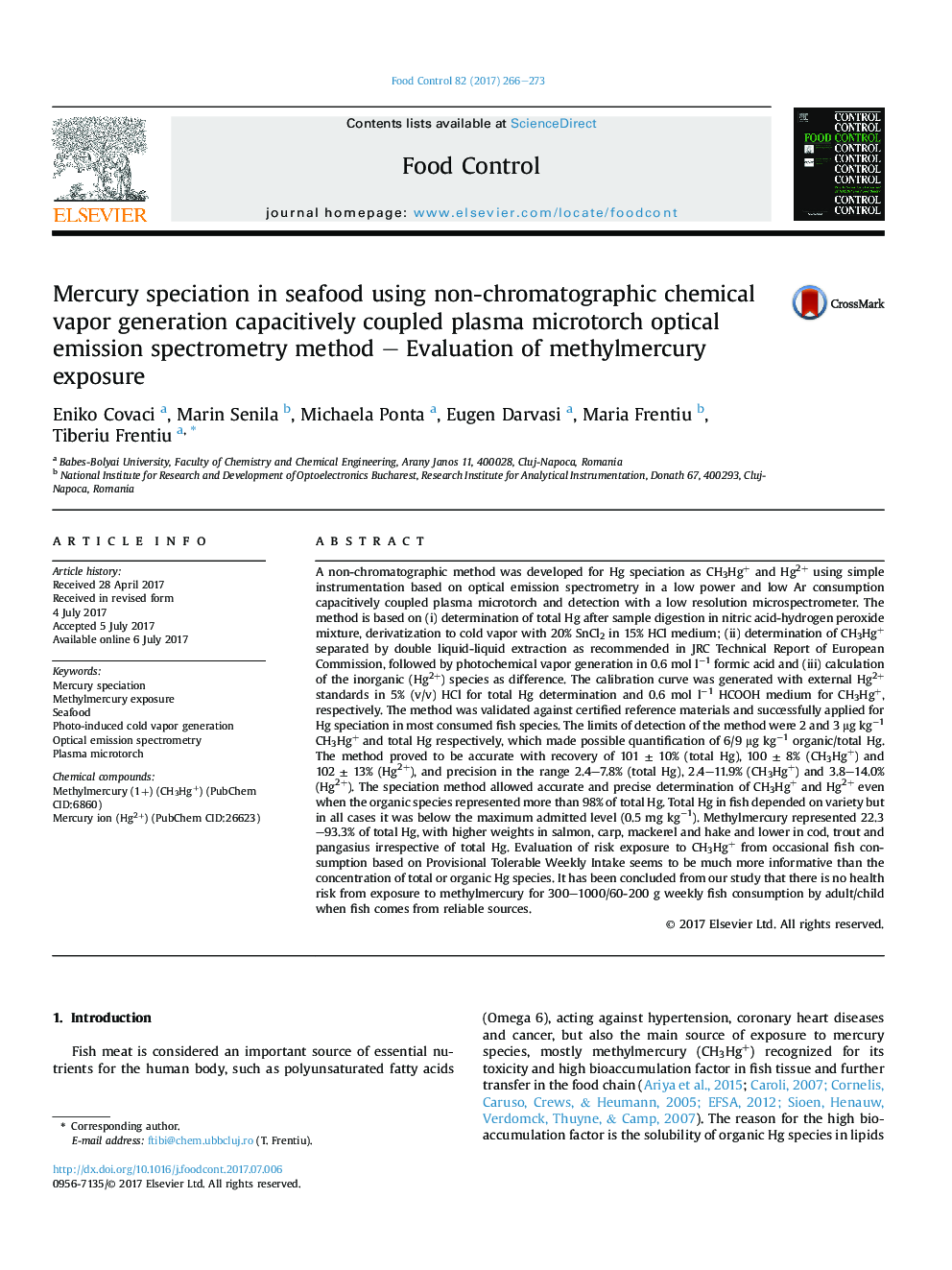| کد مقاله | کد نشریه | سال انتشار | مقاله انگلیسی | نسخه تمام متن |
|---|---|---|---|---|
| 5767159 | 1628382 | 2017 | 8 صفحه PDF | دانلود رایگان |
- Non-chromatographic method for Hg speciation as CH3Hg+ and Hg2+ in fish.
- Miniaturized spectrometric instrumentation with low power/argon plasma microtorch.
- Green derivatization approach using less harmful reagents.
- Analytical characteristics of SnCl2-CV-μCCP-OES and formic acid-UV-PVG-μCCP-OES.
- Evaluation of risk exposure to CH3Hg+ from fish consumption through PTWI.
A non-chromatographic method was developed for Hg speciation as CH3Hg+ and Hg2+ using simple instrumentation based on optical emission spectrometry in a low power and low Ar consumption capacitively coupled plasma microtorch and detection with a low resolution microspectrometer. The method is based on (i) determination of total Hg after sample digestion in nitric acid-hydrogen peroxide mixture, derivatization to cold vapor with 20% SnCl2 in 15% HCl medium; (ii) determination of CH3Hg+ separated by double liquid-liquid extraction as recommended in JRC Technical Report of European Commission, followed by photochemical vapor generation in 0.6 mol lâ1 formic acid and (iii) calculation of the inorganic (Hg2+) species as difference. The calibration curve was generated with external Hg2+ standards in 5% (v/v) HCl for total Hg determination and 0.6 mol lâ1 HCOOH medium for CH3Hg+, respectively. The method was validated against certified reference materials and successfully applied for Hg speciation in most consumed fish species. The limits of detection of the method were 2 and 3 μg kgâ1 CH3Hg+ and total Hg respectively, which made possible quantification of 6/9 μg kgâ1 organic/total Hg. The method proved to be accurate with recovery of 101 ± 10% (total Hg), 100 ± 8% (CH3Hg+) and 102 ± 13% (Hg2+), and precision in the range 2.4-7.8% (total Hg), 2.4-11.9% (CH3Hg+) and 3.8-14.0% (Hg2+). The speciation method allowed accurate and precise determination of CH3Hg+ and Hg2+ even when the organic species represented more than 98% of total Hg. Total Hg in fish depended on variety but in all cases it was below the maximum admitted level (0.5 mg kgâ1). Methylmercury represented 22.3-93.3% of total Hg, with higher weights in salmon, carp, mackerel and hake and lower in cod, trout and pangasius irrespective of total Hg. Evaluation of risk exposure to CH3Hg+ from occasional fish consumption based on Provisional Tolerable Weekly Intake seems to be much more informative than the concentration of total or organic Hg species. It has been concluded from our study that there is no health risk from exposure to methylmercury for 300-1000/60-200 g weekly fish consumption by adult/child when fish comes from reliable sources.
243
Journal: Food Control - Volume 82, December 2017, Pages 266-273
